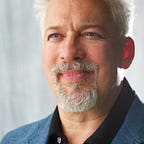The Banned Christmas Carol: How O Holy Night Defied The Church
If not for a series of intriguing events, you might never have heard O Holy Night. That’s because the lyrics to this popular Christmas Carol were written by Placide Cappeau, an atheist. The melody was later composed by Adolphe Adams, a Jew.
Needless to say, neither were regulars at church.
The “Cantique de Noel” as it was known in France, was initially widely accepted and incorporated into Christmas services. But when Church authorities discovered it was a Jewish-Atheist co-production the shit hit the Tabernacle so to speak.
The carol was declared unfit for church services because of its “lack of musical taste” and “total absence of the spirit of religion.”
Perhaps they were right. The carol did not echo the religious spirit of the time. Upon close examination the lyrics focus on humility (“Fall on your knees”), and shared humanity. The fact that “all men, and presumably women, have souls” was a highly controversial idea in the 1850s. It was widely believed that slaves did not.
While the Catholic Church tried to kill it, O Holy Night is likely popular today because of its revival by American abolitionist John Sullivan Dwight who translated it into English.
Dwight identified with the third verse of the carol: “Truly he taught us to love one another; his law is love and his gospel is peace. Chains shall he break, for the slave is our brother; and in his name all oppression shall cease.”
Naturally, Dwight’s version quickly became popular in the US during the Civil War.
But the carol, seemed to have an energy of its own. On Christmas Eve in 1871, during the Franco-Prussian War, a French soldier stood up unarmed from his trench and faced the baffled Germans. He broke out into O Holy Night. The Germans responded with a carol of their own, and so the legend goes, for 24 hours hostilities ceased while the soldiers celebrated Christmas. Soon after they went back to killing each other.
In 1933, however, the Carol really broke out in music industry parlance.
Canadian inventor Reginald Fessenden, who was born in the Eastern Townships, apparently stunned sailors across the Atlantic on Christmas Eve 1906 when for the first time they heard a man’s voice coming out of their wireless machines which normally transmitted only morse code. Fessenden had essentially helped invent radio and after reading briefly from The Bible, Fessenden picked up his violin and played O Holy Night into a microphone.
Apparently teary-eyed sailors bobbing on the dark oceans were transfixed by the soaring transcendent melody as it played impossibly out of their wireless.
As a song, O Holy Night has never lost it’s magic, however it is often sanitized and sometimes controversial lyrics removed. And it’s interesting it’s message that “we all have souls and we are all in this together” is frequently lost.
But The Carol, despite it’s many detractors, has survived where it is often performed without any reference to its powerful history.
I have to reluctantly admit, although some of the original lyrics are missing, Mariah Carey’s version is one of the best:
